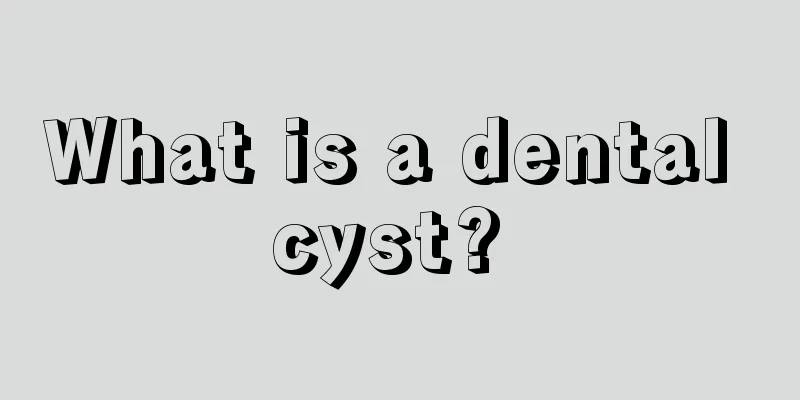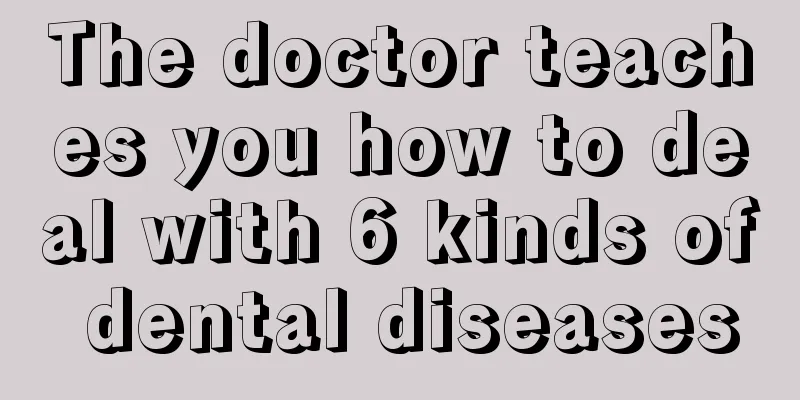What is a dental cyst?

|
Many people may not pay much attention to dental cysts. In fact, this condition is quite common, so the symptoms should be taken seriously. If accompanied by other symptoms, you must pay attention to receive comprehensive examination and treatment to reduce adverse damage. 1. Dentigerous cyst develops from normal dental follicles during tooth development. It is caused by cystic degeneration of the stellate reticular layer of the enamel organ, and the fluid around the dental follicles infiltrates between the crown and the epithelium. It is more common in young patients. It occurs more frequently in the mandible than in the maxilla. 2. Periodontal cysts and dentigerous cysts grow slowly, but they can continue to grow and compress the maxillary sinus bone, causing it to become thinner and displaced, or they can grow directly into the maxillary sinus. A huge cyst can destroy the walls of the maxillary sinus and cause bulges in the cheeks, oral vestibule, hard palate and alveolar process. The tension can cause the eyeball to shift upward and outward, or expand into the nasal cavity and cause nasal congestion. When there is no infection, there is often no typical local pain. 3. Clinical diagnosis can be based on the results of dental examination, maxillary sinus puncture, X-ray (sinus radiography - plain film or injection of contrast agent into the cyst cavity), etc. If there is a bulge in the cheek or oral vestibule, palpation may reveal that there is a smooth and elastic lump underneath, like the feeling of pressing a ping-pong ball or a broken eggshell. 4. Periodontal cysts are more common in older people. They can be single or multiple, and are more common at the roots of lateral incisors. The contents of the cyst are thin and transparent, and some are turmeric or sauce-colored liquids containing cholesterol. 5. Dentigerous cysts occur in younger people and are most common as single cysts. It often occurs on incisors and upper third molars, but can also occur on supernumerary teeth. The contents of the cyst are clear, dark brown or brown liquid containing cholesterol. On X-rays, the shadow of a periodontal cyst shows that the root of the diseased tooth protrudes into the cyst cavity. On the film of the dental cyst, it can be seen that there is a single or several complete teeth or crowns in the cyst, the position of which is not fixed, and the crowns protrude into the cyst cavity. |
<<: What caused a small piece of tooth to fall out?
>>: What to do if you have cavities?
Recommend
What should I do if the skin on the soles of my feet is severely thick?
The skin on the soles of the feet is very sensiti...
How to remove the smell of pig's feet
If pig's trotters are not cooked well, there ...
What are the magical uses of yeast powder
Yeast powder is a common seasoning in our daily l...
What diseases can be detected by blood tests
Blood tests are very common symptoms in daily lif...
Introduction to common causes of prostate cancer
At present, the specific cause of prostate cancer...
What should brain cancer patients pay attention to in their daily diet
A reasonable diet can alleviate the condition and...
Can rectal cancer be cured by taking Chinese medicine
Traditional Chinese medicine is a great treasure ...
What diseases will occur if the liver and gallbladder are not in good condition
Liver and gallbladder problems are always found f...
What are the symptoms of mid- to late-stage lymphoma?
Due to the different sites and ranges of lesions,...
What is the treatment for heart disease?
In real life, heart disease is a common disease, ...
What symptoms does blue palms belong to
The meridians in our hands are very obvious compa...
How to care for liver cancer in the late stage? Pay attention to these aspects when caring for liver cancer in the late stage
How to care for advanced liver cancer? Diet care ...
Can ichthyosis be treated? Daily care is crucial
Ichthyosis is a genetic disease and is not easy t...
What are the correct sleeping positions
Maybe many of us do not pay much attention to our...
Which is better for weight loss, red bean, mung bean or black bean
Red beans, mung beans and black beans are all rel...









